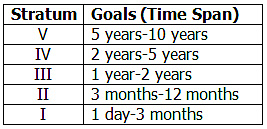Aug 6, 2013 kicks off our next Working Leadership Series in Fort Lauderdale Florida. This program contains twelve modules in six classroom sessions. The program instructor will be Tom Foster (that’s me).
If you would like to pre-register for the program, use the Ask Tom link, tell me a little about yourself and we will add you to the pre-registration list.
Schedule (All sessions – 8:30a-noon)
Session 1 – Tue, Aug 6, 2013 – Orientation, Role of the Manager, Time Management
Session 2 – Mon, Aug 12, 2013 – Working Styles, Communication
Session 3 – Mon, Aug 19, 2013 – Positive Reinforcement, Team Problem Solving
Session 4 – Tue, Aug 27, 2013 – Planning, Delegation
Session 5 – Wed, Sep 4, 2013 – Decision Making, Accountability
Session 6 – Mon, Sep 9, 2013 – Effective Meetings, Coaching
Location – All classes will be held at Banyan Air Services in Fort Lauderdale FL in the Sabal Palm Conference Room.
Banyan Air Services
5360 NW 20th Terrace
Ft. Lauderdale, FL 33309
Tuition – $1600 per participant. Vistage member companies receive a $100 discount per participant. This includes all books and participant materials.
Curriculum
Session One
Orientation. During the initial Session, participants will create both a company and a personal framework, setting expectations and direction for this program. Participants, through directed discussion, create the connection between the program course material and their day-to-day management challenges.
Role of the Manager. Introduces the distinction between supervisor and managerial roles. Clarifies the specific goals necessary for effectiveness. This module creates the foundation on which rest of the course material builds. Incorporates source material from Requisite Organization – Elliott Jaques.
Time Management. Introduces the textbook Getting Things Done by David Allen. (Text included as part of the program).
Session Two
Working Styles. Participants will complete a DISC survey (DISC is an online instrument published by TTI) and report on their own identified strengths and working style.
Communication. The largest challenge, for most managers, centers on issues of communication. This Session will introduce participants to a new level of conversational “reality.” Introduces the text, Fierce Conversations, by Susan Scott, as reference material. (Text included as part of this program.)
Session Three
Positive Reinforcement
This segment reviews the management research of Elliott Jaques and Abraham Maslow regarding “why people work.” Explores the role of positive reinforcement outlined in by Aubrey Daniels – Getting the Best Out of People.
Team Problem Solving. Expands Fierce Conversations to the group setting. Designed to move a group into “real work,” using a team problem solving model. Demonstrates how to build a team through problem solving.
Session Four
Planning. This segment introduces a results-oriented planning model, based on David Allen’s Getting Things Done, which participants can quickly use in any situation where planning would be of benefit.
Delegation. Participants are introduced to a specific model of effective delegation. Most managers hold certain mental blocks to delegation that prevents them from using this powerful developmental tool. This delegation model challenges these mental blocks so the entire team, manager included, can benefit from delegation.
Session Five
Decision Making. This segment introduces three decision models that participants can use to make decisions in specific circumstances. All models can be used in a team setting or for an individual decision.
Accountability Conversation. Introduces a results-oriented method to hold individuals and teams accountable for desired results. This combines concepts of Time Span, QQT Goals and Management Relationships.
Session Six
Effective Meetings. Moves from theory to the practical application of team dynamics. How to run a more effective meeting.
Coaching. This segment takes the communication models we have previously used and integrates them into a conversation specifically designed for coaching subordinates.
If you would like to pre-register for the program, use the Ask Tom link, tell me a little about yourself and we will add you to the pre-registration list.
